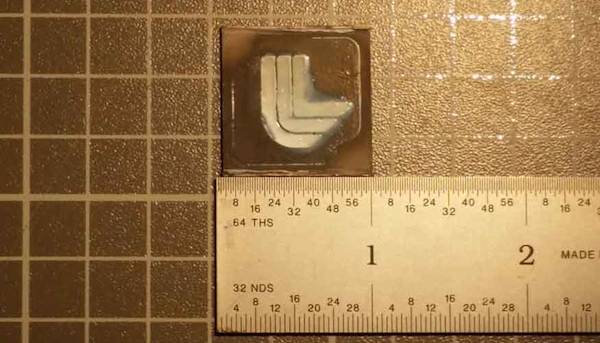
Polish manufacturer Zmorph creates 3D printers that can utilize a range of materials, including chocolate. Credit: Reuters on Youtube.
You’ve heard that that 3D printing (aka, additive manufacturing) is big. After all, it’s pretty amazing technology with incredible diversity—additive manufacturing has been used to create human organs, bikes, penguin beaks, tattoos, and—my personal favorite—pizza.
But hold tight to your Easter basket—it’s about to get heavy with custom 3D-printed chocolates (good thing new research shows that chocolate is good for you!).
Polish 3D printing company Zmorph is (literally) taking 3D printing to consumables. The company’s 3D printers feature different printer heads adapted for each material, offering printing capabilities in a range of media, including chocolate, cake, ceramics, and rubber (also a good thing that those are separate heads). Reuters reports that “confectionary firms have shown interest in the chocolate-printing toolhead, promising a sweet future for Zmorph.”
Watch the video above to hear and see more from Zmorph. And though a Zmorph will set you back about $2,500, more affordable chocolate printers are available for as little as $99.
The 3D printing revolution is also altering the landscape of the glass and ceramics industry, as evidenced by the excellent articles featured in the April 2014 issue of the ACerS Bulletin.
But new advances may stretch the reach of additive manufacturing in our world even further. Researchers at Lawrence Livermore National Laboratory recently reported an advance to electrophoretic deposition (EPD)—a method that uses charges to facilitate surface coating—that fine-tunes the method to allow more precise and patterned deposition.
The new technique, dubbed light-directed electrophoretic deposition, “uses photoconductive electrodes and DC electrical fields to dynamically pattern the surface material,” reports a Livermore press release. “This allows the buildup of material in targeted areas where the light comes in contact with the photoconductor’s surface. This enables the creation of arbitrarily patterned 3D multimaterial composites over large areas with fine resolution.”
The researchers tested the method with an alumina ceramic-tungsten nanoparticle composite, which they deposited on a photoconductive surface. To create patterns, separate layers of the composite were applied and illuminated through a laser cut mask to control deposition.
The technology is promising, as the press release states, “Light-directed electrophoretic deposition has the potential to elevate traditional EPD from a single layer, single material coating process to a true additive manufacturing technique that allows for unique composites to be formed.”
The paper, published in Advanced Materials, is “Light-directed electrophoretic deposition: A new additive manufacturing technique for arbitrarily patterned 3D composites” (DOI: 10.1002/adma.201304953).
3D printers are also used to print even more unlikely materials, including concrete and metal. In fact, a new freestanding 3D printing robot has been built to manufacture metal sculptures using an arm welder.
The MX3D metal printer, on display at the Friedman Benda gallery in New York from May through June, was designed by students at the Institute for Advanced Architecture of Catalonia and built by Joris Laarman Studio in the Netherlands.
Laarman’s website states, “We are able to print with metals, such as steel, stainless steel, aluminum, bronze, or copper without the need for support-structures. By adding small amounts of molten metal at a time, we are able to print lines in mid-air.” Watch the video below to see the welding robot in action.
MX3D 3D printing in metal. Credit: Joris Laarman Lab on Youtube.
And for you DIY-ers or 3D-printers on a budget, Michigan Tech reports a method to make your own printing filament from plastic milk jugs, a hack that can save a lot of money—99 cents on the dollar, according to their press release.
Gigaom also reports a hack to get color in your 3D prints for less than $100, in contrast to the steep cost of a full-color printer. Called Spectrom (patent-pending), it was developed by a couple of students at the University of Wisconsin-Madison and can easily be added to an existing 3D printer. With these quick and cheap fixes, you might be printing your own custom Legos in no time at all.
And in case you don’t want to splurge on your own printer, fear not—a 3D printing service is likely coming to a store near you.
What do you think 3D printers will print next?
Feature image credit: Jackie on Flickr.

